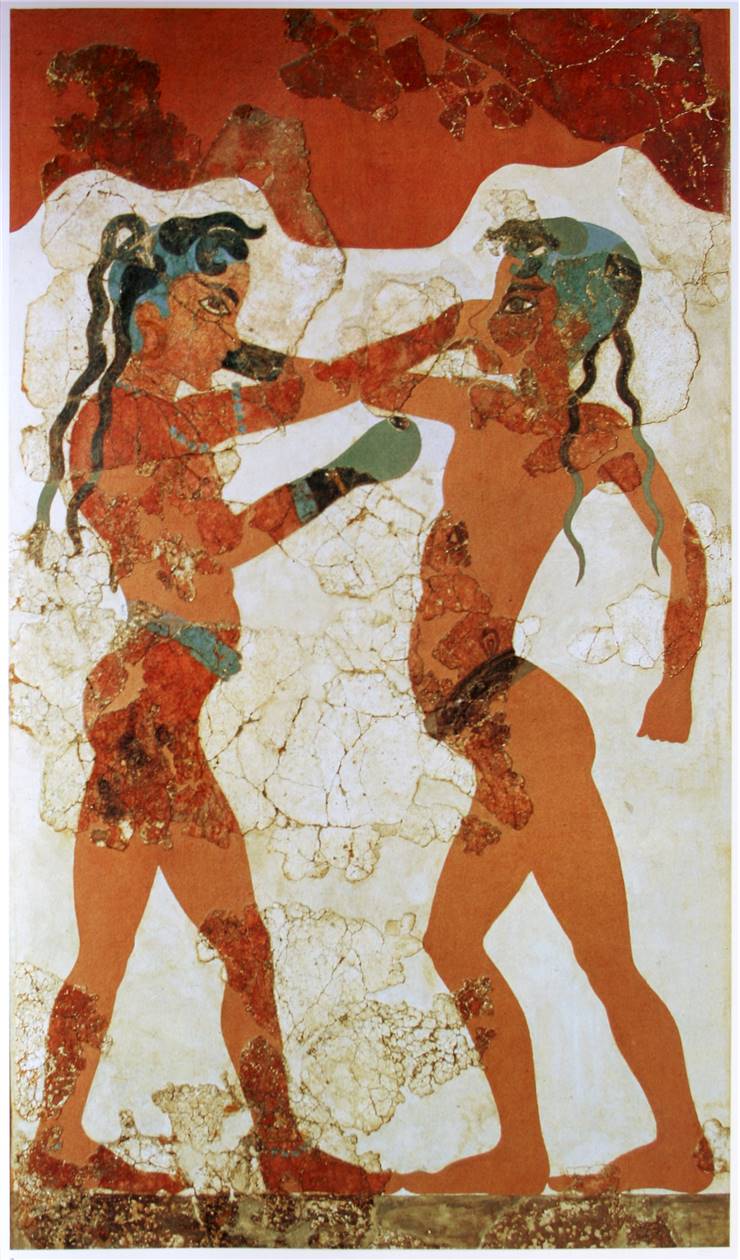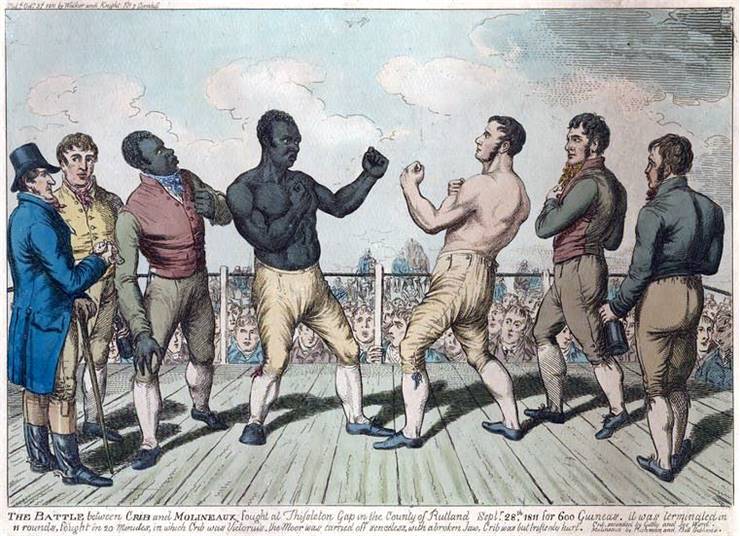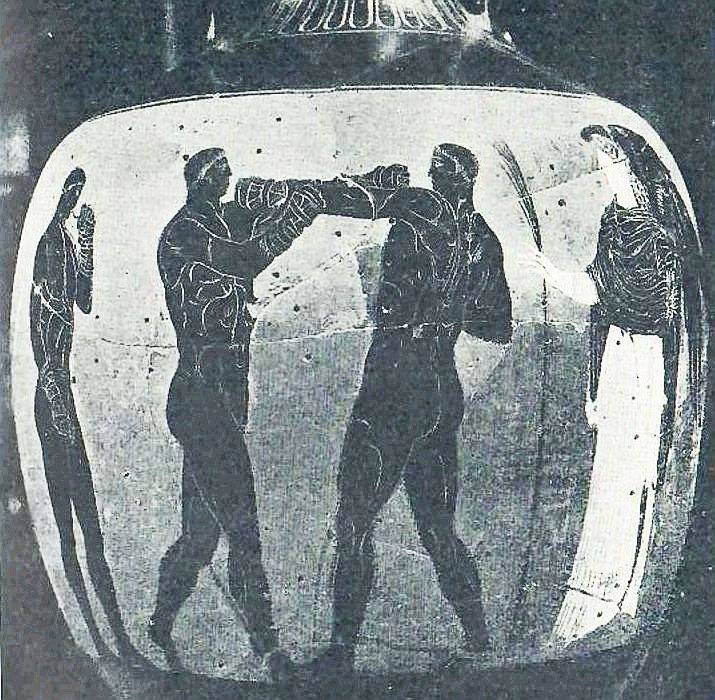History of Boxing - Origin and Evolution
Introduction
Boxing is a well-defined combat sport in which two people under the supervision of a referee throw punches one at another during a predetermined set of time while wearing protective gloves and moving inside a boxing ring. They are only permitted to use their hands and hit opponents above the waistline.
Today, boxing is an international sport practiced by Amateurs, professionals in World Championships, and athletes in Olympic and Commonwealth Games. The winner of a boxing match is decided when the referee determines that one participant is disqualified, resigns from the fight, is incapable of continuing, or when side judges elect a winner via scorecards at the end of a full match. In professional boxing, a draw is possible if both fighters receive the same points at the end of a match. In Olympic bouts, referees have to elect a clear winner.
This sport's history underwent many changes, especially after it started gaining popularity in ancient Greece over 2700 years ago.
Boxing in Ancient Times
Boxing, with a limited set of rules between two or more individuals, undoubtedly was born in prehistoric times, but organized fights were immediately depicted with the dawn of the first civilizations who could write.
Sumerian Boxing
Ancient Sumeria is home to the first recorded mention of boxing. Originally recorded in 3rd millennia BC Iraq, many more reliefs that depicted boxing were found from 2nd millennia civilizations of Babylonia, Assyria, and Hittite. Three and a half thousand years ago, the first picture of a boxing bout was found on Minoan Crete.
Ancient Greek Boxing
The civilization of ancient Greece was the first who develop boxing into a popular sport that was enjoyed for centuries and eventually popularized even beyond their borders.
They maintained rules, had official bouts, and introduced it into 23rd Olympiad competition in 688 BC. The fights were usually fought for glory, but there are records that winners of big competitions have won gold, livestock, and other rewards.
The boxing matches at that time did not have rounds, no weight limits, and the matches ended when one of the competitors was unable to continue fighting or admitted defeat.
In addition to boxing, the Olympiad games featured combat sports under Pankration. It mixed boxing and wrestling techniques with permissible moves such as kicking, holds, chokes, and locks on the ground.
Ancient Roman Boxing
Roman Empire promoted combat sports, but with the popularity of gladiator bouts fought by enslaved people, they were less focused on sporting events that ended with someone not dying. During this time, boxing fighters started wearing leather thongs around their fists, eventually becoming more armored fist weapons (with metal spikes) that gladiators used. Another invention of Ancient Roman boxing was the boxing ring, which at that time was circle-shaped.
After the abolishment of combat sports in AD 393, fistfighting as a sport returned to Italy between the 12th and 17th centuries.
Kulachniy Boy - Russian Boxing
Between the disappearance of combat sports after the fall of the Roman Empire and the rise of prizefighting in London, Russians managed to popularize a specific style of traditional bare-knuckle boxing.
This sporting discipline had many rules, eventually forming three basic types of Russian fist fighting - several variations of the one-on-one fight, team fight (ranging from a few to hundreds of participants), and rarely practiced "catch drop” type.
Traditional Russian fistfights became part of their folklore, with famous bouts and fighters immortalized in poems, literature, art, and folktales.
Prizefighting in London
The first resurgence of modern organized fist fighting and boxing sports events can be traced to England, where the disappearance of swords increased “fencing with fists.” The earliest record of the English “knuckle boxing” or “prizefighting” can be traced to 1681, and the sport gained wide popularity during the reign of the first English bare-knuckle champion James Figg between 1719 and 1730. The boxing matches of that time included fistfights, cudgeling, and fencing.
Early English boxing had no rules, round limits, weight divisions, or referees. The spectators and fighters, therefore, enjoyed the chaotic environment in which fights were viewed as being “pure.” Extreme moves like headbutting, chokes, hard throws, and eye-gouging were permissible. Fighters did not use any protection on their fists, which led to the adoption of several fighting styles in which fighters tied to protect their hands from injuries.
First rules were introduced by champion Jack Broughton in 1743 after a series of in-ring deaths. The (initially rarely enforced) rule depicted an end-of-the-match condition if an opponent dropped to the ground and could not get up after the 30-second count. Regulations devised by Jack Broughton in 1743 that banned extreme moves were eventually ratified as London Prize Ring Rules in 1838 and 1853.
Marquess of Queensberry rules (1867)
1867 saw the release of the first officially sanctioned rules devised by John Chambers, published by Marquess of Queensberry, and devised for the amateur championships held at Lillie Bridge in London that gather Lightweights, Middleweights, and Heavyweights.
All in all, 12 rules were introduced:
- Specifications for 24-foot-square or similar-sized ring.
- Three-minute rounds, with one minute of rest between them.
- Wrestling and hugging were banned.
- 10-second count for the fighter who was knocked down.
- A fighter caught by the ropes with his feet not touching the ground was considered down.
- Only two fighters and a referee were allowed to be in a ring.
- Fighters had to use “fair-sized” gloves.
- The referee had to ensure the usage of proper gloves.
- Dropping to a knee counted as being down.
- Springs in boots or shoes were not allowed.
- Referees have to reschedule the fight if the active bout cannot be continued for any reason.
- The rest of the regulation has to be taken from the Revised Rules of the London Prize Ring.
Padded gloves and f Queensberry rules were greatly popularized by the famous English heavyweight boxer James “Jem” Mace starting in 1861.
John Douglas, 9th Marquess of Queensberry
John Sholto Douglas, 9th Marquess of Queensberry, was a wealthy Scottish nobleman that is remembered today for his uncommon brutish manner, outspoken views, famous dispute with Oscar Wilde, and his involvement in the creation of the “ Queensberry rules” that formed the foundation of the modern boxing rules.
As a keen enthusiast of fox hunting, horse racing, and boxing and a patron of sports practices by nobility and common people, John Douglas became involved in creating several sporting clubs. His most enduring legacies are the Amateur Athletic Club, today known under the name Amateur Athletic Association of England, and patronage of John Graham Chambers's boxing rules, which were named "Queensberry Rules." After several decades of promotion, these rules eventually became the basis upon which modern boxing sports would be governed.
Late 19th and early 20th centuries
Popularizing the Queensberry Rules brought the end of the bare-knuckle chapter of boxing history.
The age of glove-less fighting ended during the years when famous American boxer John L. Sullivan. He vigorously lobbied against gloves, and eventually, in 1889, he was stripped of his title after defeating English fighter Jake Karline. After several legal battles, he conceded to using padded gloves and following Queensberry rules when he defended his Champion’s belt in a fight against James J. Corbet.
Boxing in the USA
However, by the end of the 19th and the start of the 20th century, boxing became marginalized and outright outlawed in several countries. Competitions and prizefights (often without rules) often started being held in hidden gambling venues. Official fights with strict rules continued at some territories, leading to the arrival of " Gentleman Jim" Corbett, the first heavyweight champion who followed Queensberry Rules. He defeated John L. Sullivan in 1892 in New Orleans.
As the popularity of boxing started to grow in the United States, many young fighters (who were at that time mostly immigrants or poor) saw boxing as one of the easiest ways to achieve wealth and glory. By 1915, Irish immigrants in the United States became a dominating group in the US boxing scene, with leading names being Terry McGovern, “Philadelphia” Jack O’Brien, Mike “ Twin” Sullivan, and many others. During that time, fighters of many other nationalities rose to fame, including the first appearances of talented black American fighters who became fully integrated into the sport only after the Great Depression of 1929. Joe Louis became the first black heavyweight World Champion boxer in 1937.
After the third quarter of the 20th century, the USA boxing scene became dominated by black boxers, such as “Sugar” Ray Leonard, “Marvelous” Marvin Hagler, Mike Tyson, and others.
History of Amateur Boxing
Amateur Boxing was initially born as the reaction of upper and middle-class gentlemen to the rising popularity of knuckle boxing and prizefighting. Thus, in the mid-19th century, a new set of rules was formed to enable the creation of a more safe and “scientific” style of fighting that could be taught in schools, universities, and armed forces. However, most champions in this type of sport still came from poorer backgrounds.
The arrival of Queensberry Rules promoted amateur boxing tremendously, leading to the establishment of the Amateur Boxing Association in 1880. Just a few decades later, boxing arrived at Olympic Games. The currently ruling boxing governing body International Amateur Boxing Association (A.I.B.A.) was formed in 1946 in London, with 24 nations being initially part of it.
The first World Amateur Boxing Championships were held in 1974 in Havana, Cuba. Winners in 11 boxing categories came from Cuba, Soviet Union, United States, Uganda, Puerto Rico and Yugoslavia.
History of Professional Boxing
Professional boxing began in 1981 when a private club National Sporting Club in London started promoting professional glove fights that followed enhanced Queensberry Rules. As professional bouts continued throughout the years, NSC oversaw the boxing scene and created title fights that were popularized and signed into reality by managers and promoters.
The golden age of professional boxing sport arrived between 1920 and 1930s with the three-man team of boxer Jack Dempsey, his manager Jack Kearns, and the promoter Tex Rickard. Their efforts attracted the then unseen amount of funding into boxing, with their matches being broadcasted live via radio, and ensured that boxing as a professional sport would survive after the pause that was caused by the Second World War.
After an early 20th century, the center of the professional boxing word moved slowly but surely to the United States. There, National Boxing Association (which later dissolved) started organizing title fights after 1920.
In 1998, the first professional woman boxing match happened in London.


